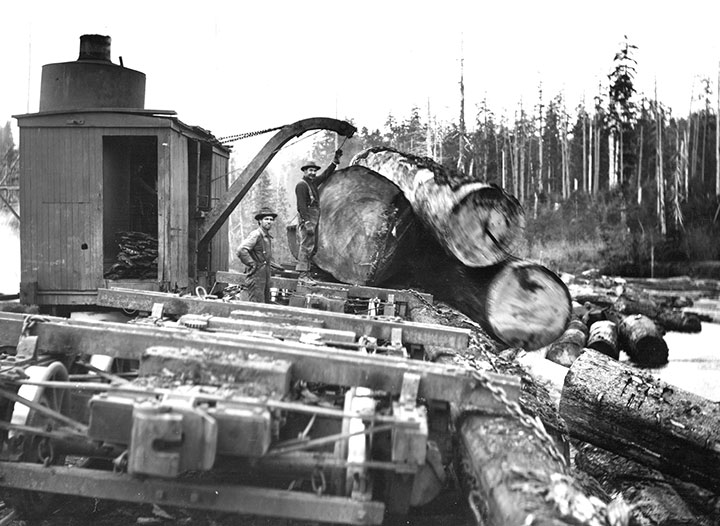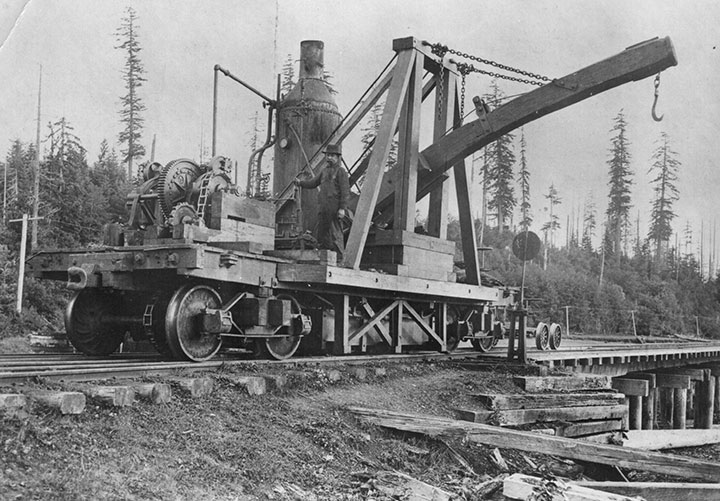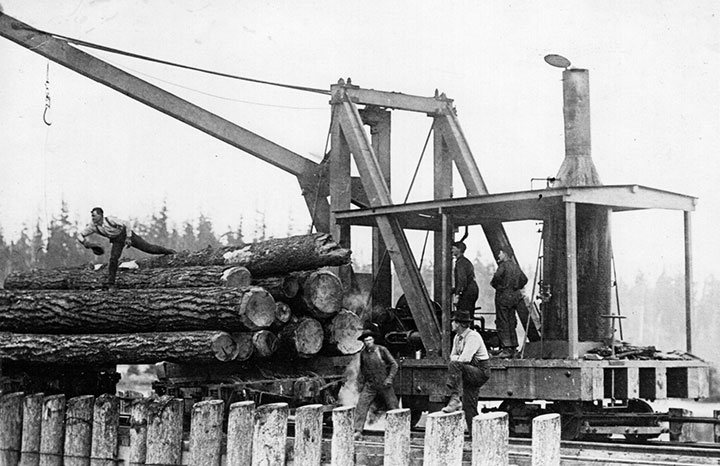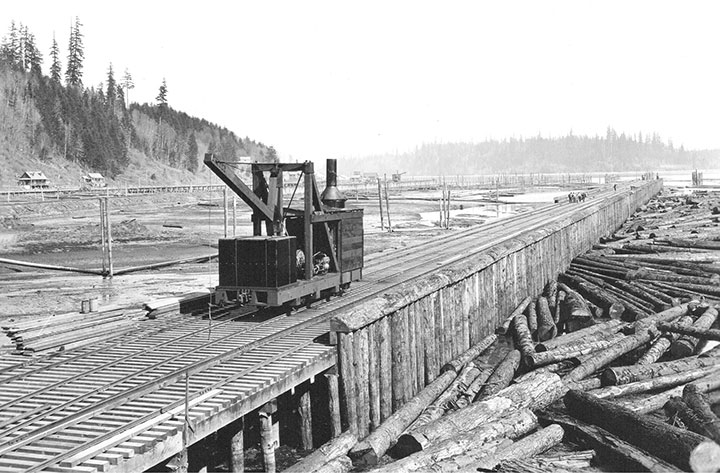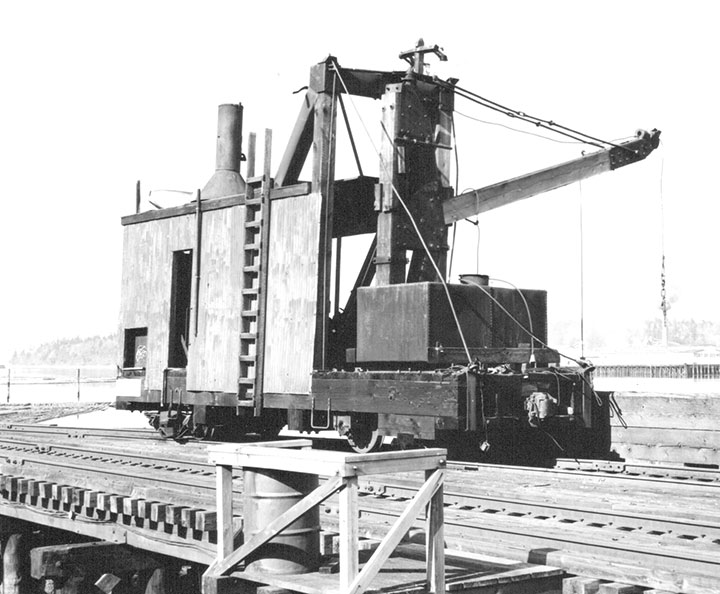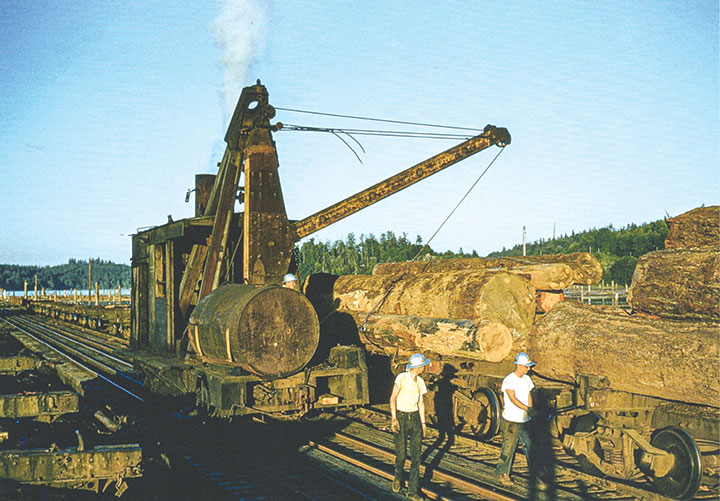All the major donkey manufacturers offered log unloading machines in their catalogs. Before this occurred, however, a few of the bigger logging companies designed their own machines. These unloaders were equipped with just a “swamp hook” which was quite adequate for the big logs and small loads of the 1890s. The Deep River Logging Company of Naselle, the Port Blakely Mill Company of Kamilche, the Peninsular Railway of Shelton, and the Polson Logging Company of Hoquiam, all in Washington State, were a few of the companies that designed their own. These were designed to run down a track parallel to the unloading dock track which was usually tilted a few inches towards the water to aid in the unloading process.
Washington Iron Works of Seattle offered an unloading machine with a swinging boom which unloaded logs with the aid of a strap (cable) hooked to the water side of the dock, one for each car. This in effect “tight-lined” a whole load of logs off at an average rate of one minute per car. Known companies that operated these machines were: Capitol Boom Company of Olympia, the Peninsular Railway and later Simpson at Shelton, who owned at least two of these machines, and the Mud Bay Logging Company at Mud Bay, near Olympia, all in Washington State. The Capitol Boom and one of the Simpson machines lasted well into the Diesel age of the 1960s, still powered by steam.

